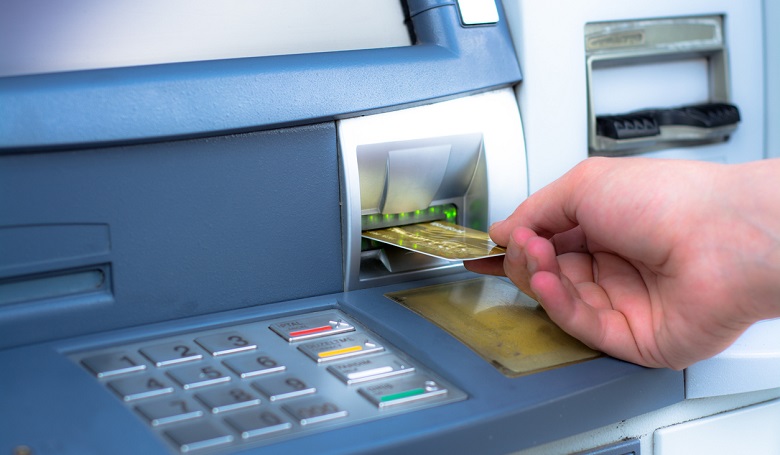
According to Visa®, the introduction of the EMV (Europay, MasterCard®, and Visa) chip card in late 2015 resulted in a 76% decrease in counterfeit fraud in less than three years. Visa claims that the use of chip cards is incredibly effective against fraudulent activity. Other major financial institutions praise chip cards as the gold standard for consumer credit card protection.
EMV chip cards addressed the vulnerability of magnetic strip credit cards, namely credit card skimming. In this scam, a device is physically attached to a gas pump, ATM, or point of sale machine to capture your account information without your consent. Once this information is obtained, a counterfeit card can be created to make purchases or withdraw cash from your account.
However, consumers who upgraded to chip cards may have prematurely breathed a sigh of relief, because thieves have found a new way to exploit chip-enabled cards through credit card shimming instead of skimming.
An important distinction is that skimming devices read information from the magnetic strip on the back of the card, while shimmers contain microchips specifically designed to capture data contained in the EMV chip as soon as you insert your card into an ATM or point of sale machine. Credit card skimmers are often bulky and wobbly, but shimmers are paper-thin. While you might be able to identify a credit card skimmer since it sits on top of the original card reader, the unfortunate truth is that you cannot see a shimmer with your naked eye. It is installed in the card reader itself, often by a crook pretending to make a transaction.
The shimmer’s chip-reading ability enables it to capture data from not just your credit cards, but also your chip-enabled debit cards. Other information besides your bank account details can be garnered from these cards, including your PIN. As soon as they have your information, crooks can begin making withdrawals and charges. If the thieves aren’t caught promptly, they may sell your data on the Dark Web.
While this might sound like the EMV cards have failed, there is more to the story. Chip cards still contain an additional level of security that magnetic strip cards lack, but if a bank fails to perform a critical verification step, then you might have a problem.
Aquila Wealth Advisors Owner and Financial Planner Eric Maldonado, CFP®, MBA, CKA®, reassures consumers that the sky is not falling. Maldonado says we shouldn’t let fear drive consumer actions, but stresses that timely reporting of suspicious card activity is key to resolving potential identity theft issues. “A new card can always be issued by the credit card company, but this can be a bummer because (all payees) linked to the card will need to be updated,” acknowledges Maldonado.
What can you do to prevent fraudulent activity on your account? Miguel Segura, Regional Director of the Better Business Bureau (BBB) in San Antonio, Texas, advises cardholders to pay inside. While this may seem simple, it can be a powerful step in preventing credit card identity theft since outdoor card readers appear to provide a greater opportunity for thieves to attach a skimmer or shimmer without attracting much attention.
Segura also advises, “Monitor bank accounts at least once a month. (The) BBB has received reports of repeated fraudulent transactions totaling several dollars on the same account. Pay attention.” It might be easy to dismiss a $2.49 charge from Walgreens last week and another $4.32 charge from 7-Eleven the week before, but Segura warns that it’s this type of unchecked activity that keeps criminals just under the radar. Several dollars’ worth of charges each day on thousands of stolen accounts will add up quickly.
Set up alerts on your credit card and debit card accounts, so that you are notified every time a transaction takes place. The sooner you become aware of fraudulent activity, the better your chances of recovering your losses and avert further theft. If you would like to prevent identity theft, check out our credit monitoring service.
What if you aren’t making a purchase and merely want cash from your card? Should you stay away from ATMs completely? Recommends Sahil Vakil, CFA, CFP, President and Wealth Advisor at MYRA Wealth, “Withdraw money at a teller versus an ATM; if it’s after-hours, use an enclosed ATM with CCTVs (closed-circuit televisions) versus a standalone ATM.”
One tactic to fight identity thieves recommended by all the experts was to use near-field communication (NFC) payment apps such as Apple Pay, Android Pay, and Samsung Pay. NFC payments can be made with an iOS or Android phone. NFC technology allows two devices near each other to exchange data. When using mobile payment apps, a random code is generated to process the transaction instead of your actual credit card number. Mobile payments usually take a few minutes to set up using your credit card with bank verification being a normal part of the initial set-up process.
Until we stop using plastic, remain vigilant and practice caution in all your card transactions. Where possible, mobile app payments may be the best way for you to protect yourself in the ever-changing landscape of credit card identity theft.
If you want more credit, check out our list of credit card offers.






















